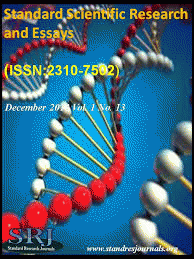The use of organic materials as P sources is of considerable interest in smallholder farming systems in tropical Africa, mainly because of their potential as alternatives to inorganic P fertilizers. Field studies conducted in a Nitisol of western Kenya in 1995 (crop 1) and 1996 (crop 2) compared effects of organic and inorganic fertilizers on resin extractable P availability (Pext) and maize (Zea mays L.) yield (MY). Leaf biomass and small twigs of Tithonia diversifolia, Croton megalocarpus, Lantana camara L., Senna spectabilis, Calliandra calothyrsus, and Sesbania sesban, were applied at 5 Mg ha1 (DW), supplying an estimated 9–15 kg P ha1 and 30–212 k N ha1. The inorganic fertilizer was triple superphosphate (TSP), applied at 0 (control), 10, 25, 50, and 150 kg P ha1 with each plot receiving 120 kg N ha1 as urea. All plots received a blank application of 100 kg K ha1 as potassium chloride. Between 92 and 98% (P
DOI:
https://doi.org/10.1016/S0167-8809(02)00167-6
Altmetric score:
Dimensions Citation Count:
00167-6&apiKey=3948bb216041dbffcb29a618defafc29&httpAccept=image%2Fjpeg)
Publication year
2003
Authors
Kwabiah, A.B, Stoskopf, N.C., Palm, C.A., Voroney, R.P., Rao, M.R., Gacheru, E.
Language
English
Keywords
phosphorus, organic fertilizers, fertilizers, maize, plant nutrition, zea mays, small scale farming, farming systems
Geographic
Kenya























